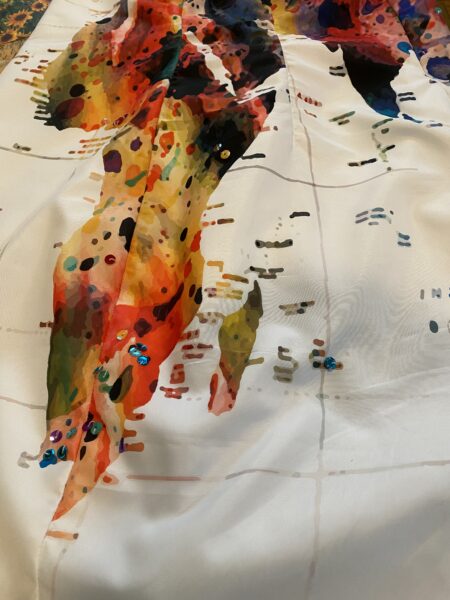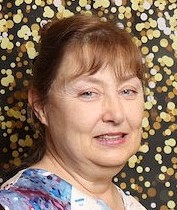Why is it so hard to count our women pastors?
by Nerida Bates | 26 July 2022 |
20 students accepted the call to be baptized. The president told me that I would do the baptism—but I would have to tell the church board so they would not be surprised when Sabbath came that I was baptizing. When I told the board members I would baptize, our head elder said, “So the baptism will be as meaningless as swimming in the sea.”
Over the last two years I have had a lot of flinch moments like the one above—moments of heartbreak when a female pastor is needlessly cut down.
I heard related stories from young Latinx women just starting out:
I received a call to serve as Bible worker in one of the districts (3 churches) while I was finishing my fourth year. It was a growing and blessed experience. God confirmed that it is what I want to do for the rest of my life. After a year the contract was not renewed. With no reason at all. I graduated, without a job.
I heard them from veteran pastors in Africa:
I’m confused whether I’m a pastor anymore. I studied theology. I was employed by [conference name withheld] as a pastor, was given churches and a district to pastor. Later I was employed by the conference as the Director for Women’s Ministries. But now I am left being self-supporting in my ministry.
Another woman who trained in theology in the 1980s told the Association of Adventist Women that “in many ways I failed at being a pastor.” Her failure, she felt, was due to being given no opportunity to work in a church setting. Another in Oceana said that even after her local culture had changed to be more accepting of female chiefs and parliamentarians, and even after years of working as a pastor, she is still unsure how her own congregation views women in ministry.
How many of us are there?
Call me an optimist, but I believe that if the true number of women pastors in the Adventist church were known, division and General Conference administrators could not hide that God is working through women. How could you argue about God’s calling of a woman who in her first year baptized more than all the male pastors in her country put together?
Sometimes I just feel flat-out angry. For example, I think of a division president who insisted his division would not accept women as ministers culturally—when four countries in his division depend on women as solo church pastors! Another division president said they are only just reviewing the theology of allowing women to be elders—and three months later, one of their conferences commissioned their first woman pastor. Why didn’t these leaders know?
There is something true about the census slogan: People don’t count unless they are counted.
So I set out to count. Just how many Adventist female pastors are there? It’s a simple question with a very murky answer.
I’m not the first to try. Patty Marruffo, now executive secretary of the Southeastern California Conference, tried to present a count of international women pastors at her ordination service, and ran into the same problems I have.
Who counts as a pastor?
There are two main issues.
First, who is a pastor? For example, do chaplains or Women’s Ministry directors count? How do we identify them? Often a male Bible worker is referred to as “Pastor,” while a woman is called “Sister.” More importantly, a man who is successful in pastoral endeavors is supported to go on for further study and recognition, but a woman is not. If a woman funds further study herself, as May Chilumbi of Zambia did, she is still called a literature evangelist, not a pastor, at her own funeral!
Second, almost every level of administration in the Adventist church has obstructed the collection of information.
Until the last quarter of this year, even asking for the number of women pastors in the United States felt like being gaslighted. The division and unions say it is not their job, and conferences react as if I am asking for a home address: “We are forbidden from giving you such private information!”
Who knew a mere number would be considered such an invasion of privacy!
But counting matters. One division president, new to the job, was asked how many women in ministry he had in his division. After giving the standard answer that “Divisions and unions don’t keep this sort of data,” he ventured an educated guess. It turns out there were 10 times the number of women in ministry in his division that he had guessed! He had no desire to be obtuse. He just had no idea because the numbers weren’t given to him.
In January 2022, the North American Division announced they are now keeping a database of women in ministry. The South Pacific Division, which was perhaps the first to assign unions to count and care for women in ministry, is also collecting data. The Inter-American Division was quite supportive, and the Trans-European Division was excited about the prospects of a world count. (But when asked for an accurate count, all they could offer was the total at the women’s pastoral retreat a few years ago.)
Outside of these divisions, though, things remain murky.
The Association of Adventist Women, of which I am president, gets random emails asking advice or offering information. Do I know the names of the Spanish-speaking female pastors in Japan? Did you know of this successful female pastor in Peru in the 1990s? Another email praised a woman pastor in an African country as by far the best preacher he had heard in years.
Sometimes the information itself is paradoxical, such as the article in the Adventist Review praising evangelism done by 500 women in Bolivia. Or enigmatic, such as Olga Mulga in Russia, who is proudly touted as bringing more than 3,000 souls to Adventism in a culture where training a woman for evangelism is still considered heretical.
In fact, the Adventist Yearbook names and numbers (in the last issues that named Bible workers) reveal there is inequality in Adventism. Women abound in positions such as literature evangelist, Bible worker, and “rural evangelist.” Many of them are granted missionary credentials, and some even pastor their own small churches.
These whispers and rumors are brought to my attention because people assume that if church leaders just knew about these successful women, their calling wouldn’t be denied. If we could just make these numbers, these stories, undeniably public, minds would change.
But how could I count what was so intentionally hidden?
My sequined protest
So in protest, I made something beautiful to celebrate these women who feel uncounted.
While shopping for an Association of Adventist Women banquet dress, I saw one with a globe pattern. My mind began to spin. I decided to make my own dress with a world map wall hanging. Then while I watched the evening news, I sewed on sequins for each of the women in ministry that I could find. While it did have a rather clandestine and conspiratorial feel to it, it was also immensely tender to sew on sequins for friends, classmates, and women who have not received the simple recognition of being counted. And who could argue with anything that pretty!
I am surprised that for all of the hurt and frustration, the dress turned out much more beautiful than I expected. It’s not every day you get to wear a handmade, custom-fit, designer dress that preaches such a strong message.
And there are sequins on every continent. I chose different colors for pastors, chaplains, administrators, theologians, and self-supporting ministers. After seeing the number of literature evangelists in Zambia and religious educators in Trinidad, I added another category for women Bible workers and promptly ran out of the green sequins for it. I could not resist a special category for people like Olga Murga, because you can’t both brag about and deny the same person.
I am sure my count is a vast underestimation. I know of two self-supporting women pastors ministering in Romania, but what are the odds that I know personally all of the independent women working there? Surely there are others. And to be truthful, some countries were too small in the map to fit the number of pastors. China, the U.S., Papua New Guinea—they only have half the sequins they should have.



The bottom line is: It’s a beautiful dress, representing a beautiful church full of stunningly capable and talented but under-appreciated women pastors, who can no longer be ignored.
But I’m still waiting for the names of those Spanish-speaking female pastors in Japan!
 Nerida Taylor Bates is the president of the Association of Adventist Women. She is a pediatrician scientist (MD, PhD) originally from Australia, now living in California. She has three grown daughters and enjoys travel and family history.
Nerida Taylor Bates is the president of the Association of Adventist Women. She is a pediatrician scientist (MD, PhD) originally from Australia, now living in California. She has three grown daughters and enjoys travel and family history.




